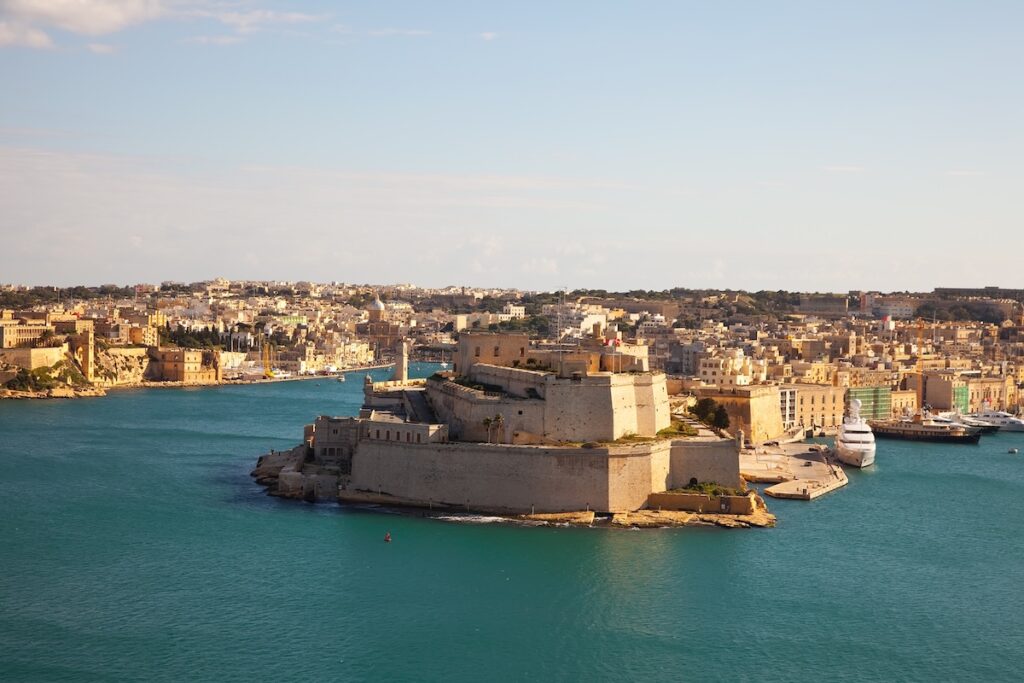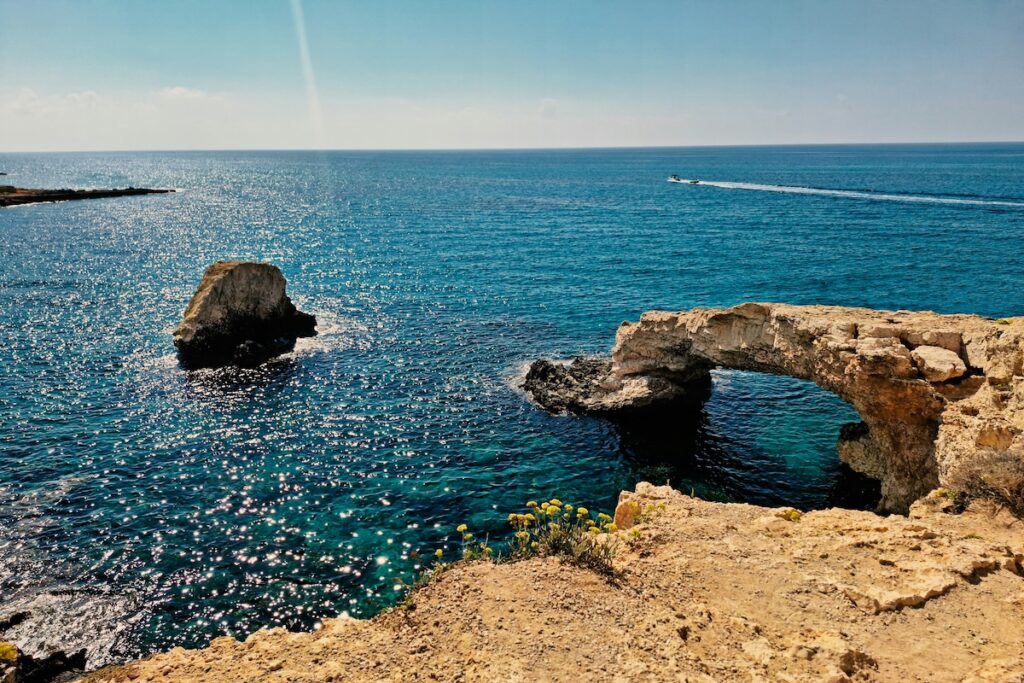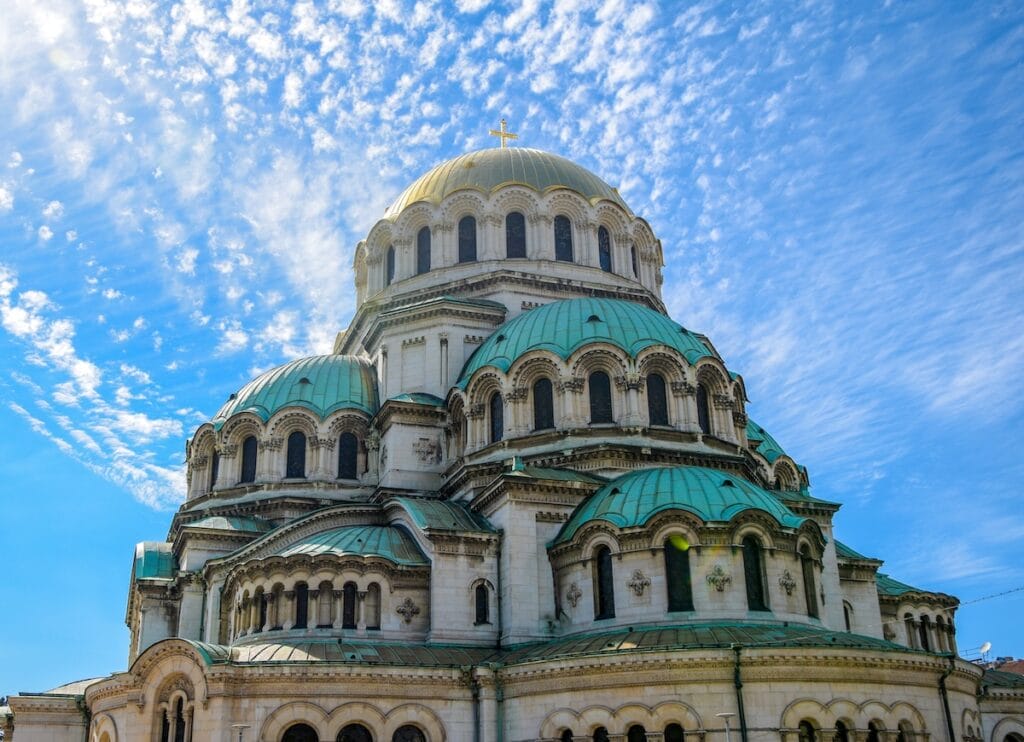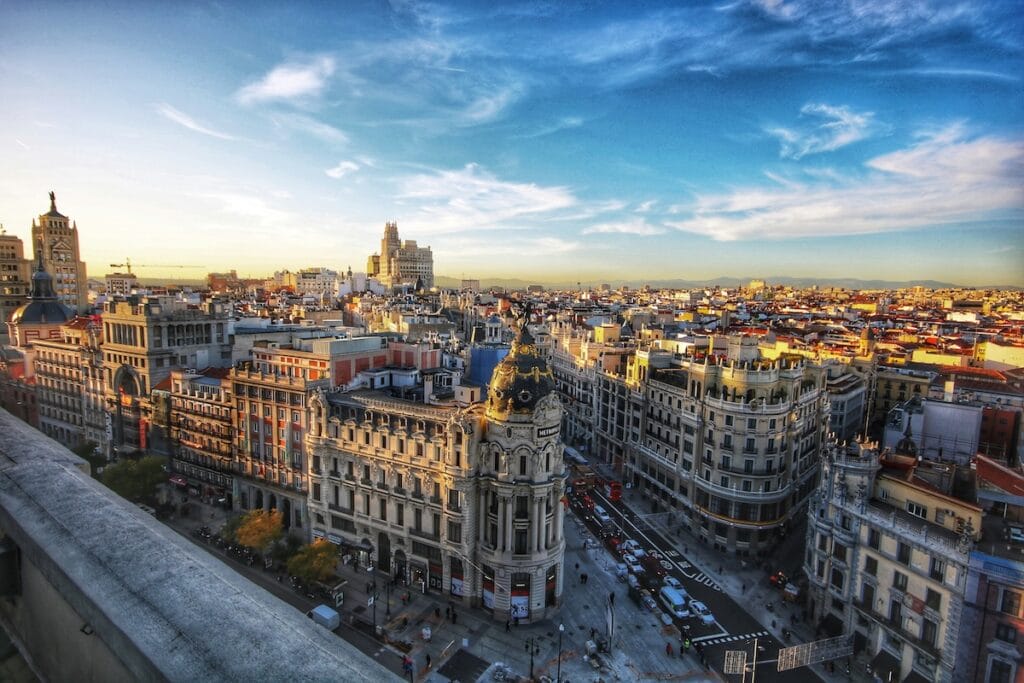Malta Digital Nomad Visa: A Guide for American Remote Workers
October 7, 2025 | Digital Nomad | 11 minute read
Expat Tax Blog. Tax Tips for US Americans abroad.
Updated October 21, 2025
 All blogs are verified by Enrolled Agents and CPAs
All blogs are verified by Enrolled Agents and CPAs
Updated October 21, 2025

Malta, a sun-drenched island nation frequently called the “Heart of the Mediterranean”, has long been a haven for travelers, entrepreneurs, and history lovers. With its mix of ancient architecture, modern infrastructure, and a vibrant expat community, it’s now carving out a new reputation as one of Europe’s most welcoming spots for digital nomads.
In 2021, Malta introduced its own digital nomad visa, officially called the Nomad Residence Permit, giving remote workers a legal pathway to live and work from the island while enjoying its unique lifestyle. Whether you’re in tech, marketing, design, writing, or simply working remotely for a company abroad, Malta offers the chance to blend professional flexibility with Mediterranean living.
In this article, we’ll break down what the visa offers, who qualifies, and what American digital nomads need to consider when it comes to taxes, residency, and long-term planning.
Reusable Callout-Box
*For design changes please notify Dev Team.
*For bullet points please wrap text accordingly: (ul) *placeholderText* (ul)
One bulletpoint is defined by `(li)` > (ul) (li)bulletpoint1 (li)bulletpoint2 (ul)
Quick Snapshot: Malta’s Nomad Residence Permit
(ul)
(li)Visa Length: 1 year (renewable up to 4 years)
(li)Income Requirement: Minimum €42,000 gross per year ( around $49,000 USD; as of October 2025) or ~€3,500/month.
(li)Who Qualifies: Remote employees, freelancers, or business owners with foreign clients
(li)Tax Incentive: First 12 months foreign income is tax-free; after that, remitted income may qualify for a flat 10% rate
(li)Family Friendly: Spouses and dependents can apply for their own permits
(ul)
What is Malta’s Digital Nomad Visa
With the rise of international remote work, Malta has positioned itself as one of the world’s most attractive destinations for digital nomads. Its Nomad Residence Permit is designed for remote employees, freelancers, and entrepreneurs who can prove ongoing income from outside Malta.
The program allows non-EU, non-EEA, and non-Swiss citizens to live and work remotely for up to one year, with the option to renew for a total stay of four years. The Residency Malta Agency oversees the program and handles renewals.
Malta stands out globally thanks to its affordability compared to other European hubs, English as an official language, and strong digital infrastructure.
Reusable Callout-Box
*For design changes please notify Dev Team.
*For bullet points please wrap text accordingly: (ul) *placeholderText* (ul)
One bulletpoint is defined by `(li)` > (ul) (li)bulletpoint1 (li)bulletpoint2 (ul)
Renewal Requirement
To renew your Nomad Residence Permit, you must spend at least five cumulative months in Malta during the year before submitting your renewal application.Malta Digital Nomad Visa Requirements
The Malta Nomad Residence Permit is designed for remote professionals who want to enjoy long-term living in Malta while keeping their income abroad. To qualify, applicants must meet several key criteria:
- Age 18 or older: The permit is open to working adults, not students or short-term travelers.
- Remote income source: You must be employed by a foreign company, run or hold shares in a business registered outside Malta, or freelance for international clients.
- Minimum income: Applicants must show a gross yearly income of at least €42,000 (about €3,500 per month).
- Third-country nationality: The program is for non-EU, non-EEA, and non-Swiss citizens.
- Health insurance: Must cover your entire stay in Malta
- Accommodation: Proof of a rental or property agreement in Malta is required
- Background check: Applicants must pass a criminal background and verification check
This program is tailored to remote workers, freelancers, and entrepreneurs who can support themselves while contributing to Malta’s growing digital nomad community. Spouses and dependents may also apply for their own permits, making it a flexible option for families.
How to Apply for the Malta Digital Nomad Visa
Applying for Malta’s Nomad Residence Permit takes more than just paperwork, but the process is clear if you know the steps. Here’s what it looks like, step by step.
Step 1: Make Sure You Qualify
Check that you meet the main requirements: your age 18 or older, with at least €42,000 in annual income. You work for a foreign employer, run a business abroad, or freelance for international clients.
Step 2: Prepare Your Documents
Gather your key paperwork in advance, including:
- A valid passport (all pages)
- Proof of financial stability (such as bank statements or contracts)
- Employment contract, client agreements, or business registration (depending on your situation)
- Health insurance covering your entire stay in Malta and the EU
- Proof of accommodation (rental lease or property deed)
- A clean police certificate
- A cover letter explaining your intent and why you are applying
Optional but sometimes required: marriage/birth certificates for family members, or proof of partnership if applying with a non-married partner.
Step 3: Submit Your Application Online
Apply directly through the Residency Malta Agency portal. Upload your completed form and documents, then pay the €300 fee (plus €300 for each family member).
Step 4: Wait for Review and Approval
Processing takes about 30 working days. If approved, you’ll receive a Letter of Approval in Principle. Within 30 days of that, you must show proof of health insurance and accommodation in Malta.
Step 5: Travel to Malta and Provide Biometrics
If you need an entry visa, the Central Visa Unit will guide you. Once in Malta, you’ll schedule an appointment at Residency Malta to provide biometrics. After 3–4 weeks, your residence card will be ready for pickup.
Step 6: Renew if Needed
The permit is valid for one year and can be renewed up to three times, for a maximum of four years.
Processing Time and Fees
Applying for Malta’s Nomad Residence Permit comes with a few costs and timelines to keep in mind:
- Application fee: €300 per applicant, plus €300 for each dependent included in the application.
- Residency card fee: €100 per person, payable in person at Residency Malta’s offices (card payments only — no cash accepted).
- Processing time: Typically around 30 working days from the date Residency Malta’s Finance Department confirms receipt of payment. In some cases, the full review and approval process may take up to 60 days if additional documents or information are required.
For the latest details, see Residency Malta’s official application process page.
Benefits of the Malta Nomad Residence Permit
The Nomad Residence Permit isn’t just a visa; it’s a pathway to living and working in Malta with stability and ease. From language and lifestyle advantages to favorable tax treatment, the program offers clear benefits for remote professionals.
- English as an official language: Seamless communication makes integration easier for international nomads, with everyday life and business conducted smoothly in English.
- Stay long-term: Live in Malta for one year with the option to renew up to three times (maximum of four years).
- Favorable taxes: For the first 12 months, foreign income remitted to Malta is tax-free. After that, it may be taxed at a flat 10% instead of the standard progressive rates.
- Mediterranean lifestyle: Enjoy Malta’s sunny climate, cultural richness, and relaxed pace of life.
- Nomad community: A growing remote work hub makes it easy to connect, collaborate, and network.
- EU gateway: Malta’s location offers easy access to the European market and nearby travel.
- Quality of life: Safe environment, good healthcare, and modern infrastructure support comfortable long-term living.
Digital Nomad Taxes for Americans in Malta
The ability to live in Malta long-term under the Nomad Residence Permit is a major win for remote workers, but it comes with potential tax tradeoffs. If you meet Malta’s local residency rules, you may also become liable for Maltese taxes. And as an American, your US tax responsibilities follow you no matter where you go, meaning you’ll need to juggle both systems at the same time.
Maltese Tax Residency
If you spend more than 183 days in Malta during a calendar year, you are generally considered a Maltese tax resident. Malta applies a remittance-based system for most foreign residents, meaning only income you bring into Malta is taxable, while income kept abroad is not. However, those who are both domiciled and ordinarily resident in Malta are taxed on their worldwide income.
Normally, Maltese tax residents are subject to progressive tax rates ranging from 0% to 35%, depending on income levels.
However, Nomad Residence Permit holders benefit from a special expat-friendly regime. For the first 12 months, foreign income earned remotely and remitted to Malta is fully exempt from Maltese income tax. After the first year, that income may be taxed at a flat 10% rate, significantly lower than the standard progressive scale. To access this regime, you must register your residence status with the Maltese tax authorities.
Nomad permit holders are not required to pay Maltese Social Security contributions and do not gain access to local pensions or benefits.
US Tax Rules Still Apply
Even if you’re exempt from local Maltese tax, you’re still on the hook with the IRS. The US taxes all citizens and Green Card holders on worldwide income, no matter where they live. As an American digital nomad in Malta, you still must file a US tax return every year.
That said, you may qualify for tax relief through two key provisions. The Foreign Earned Income Exclusion (FEIE) allows you to exclude up to $130,000 of foreign earned income from US taxes in 2025. Alternatively, the Foreign Tax Credit (FTC) offers a dollar-for-dollar credit on income taxes you’ve paid to a foreign government. Both can significantly reduce your US tax bill, but only if you file correctly.
Many US expats may also be required to report foreign bank accounts and assets by filing FBAR (FinCEN 114) and FATCA (Form 8938), depending on account balances and asset thresholds.
Self-Employment Tax
Many digital nomads are self-employed. If you’re a freelancer, contractor, or business owner, you’re responsible for US self-employment (SE) tax, even while living abroad.
This tax covers Social Security and Medicare and is 15.3% of your net earnings. FEIE and the Foreign Tax Credit help reduce income tax, but they don’t eliminate self-employment tax. This is a common surprise for expats who are earning independently overseas.
For more details, check out this full guide on digital nomad taxes for US expats.
Reusable Callout-Box
*For design changes please notify Dev Team.
*For bullet points please wrap text accordingly: (ul) *placeholderText* (ul)
One bulletpoint is defined by `(li)` > (ul) (li)bulletpoint1 (li)bulletpoint2 (ul)
Let MyExpatPlanning Help
Planning your next chapter as a digital nomad abroad? Let MyExpatPlanning guide you so your freedom to work and travel doesn’t create tax headaches. From unlocking expat tax benefits to staying compliant and correctly reporting foreign accounts, we’ll help you build a strategy that fits your lifestyle and finances. Smart planning today means fewer surprises and more money in your pocket tomorrow.How Does Malta’s Digital Nomad Visa Stack Up Against Other Popular Programs?
Malta’s Nomad Residence Permit offers a clear pathway for remote workers, but how does it compare with other popular digital nomad visas worldwide?
| Country | Visa Name | Length | Income Requirement | Tax Implications |
|---|---|---|---|---|
| Malta | Nomad Residence Permit | 1 year (renewable up to 4) | €42,000 per year (approx. €3,500/month) | Remittance-based tax system; special expat regime may apply (flat 10% on remitted income after 1 year) |
| Thailand | Destination Thailand Visa (DTV) | 5 years (180-day stays) | 500,000 THB bank balance (approx. $14,400 USD) | Foreign income taxed if remitted into Thailand during the same year |
| Italy | Digital Nomad Visa | 1 year (renewable) | Approx. €28,000 annual income | Taxed as resident if staying more than 183 days in a 12-month period |
| Portugal | D8 Visa / Digital Nomad Visa | Temporary Stay Visa: Up to 1 year; Residency Visa: 2 years (renewable) | 4x Portuguese minimum wage (approx. €3,280/month) | Taxed as resident if staying more than 183 days in a 12-month period |
| Cyprus | Digital Nomad Visa Scheme | 1 year (renewable up to 3) | €3,500 per month (net, after tax) | Taxed as resident if staying more than 183 days in a 12-month period |
| Spain | Digital Nomad Visa | 1 year (renewable up to 3) | €2,762 per month (200% of Spanish minimum wage) | 24% flat tax under Beckham Law |
Initial Setup and Key Considerations for Digital Nomads in Malta
Settling into Malta? Here are some essentials and key considerations to help you hit the ground running:
- Find short-term housing first: Start with a rental via Airbnb or local letting agents while you explore neighborhoods before committing to a long-term lease.
- Banking options: Opening a local bank account with BOV (Bank of Valletta) or HSBC Malta may be useful for longer stays and local transactions like rent and utilities, though many nomads stick with international banks or fintech services.
- Stay connected: Malta has excellent internet coverage. Mobile providers like GO, Epic, and Melita offer prepaid SIMs with generous data packages you can pick up at the airport or city shops.
- Getting around: Malta’s small size makes buses the main public transport option, though they can be slow. Many expats opt for scooters, rental cars, or ride-hailing services like Bolt for flexibility.
- Local etiquette: English is widely spoken, but learning a few Maltese phrases goes a long way. Island life runs at a slower pace—patience is key.
- Cost of living: Expect to spend €1,100–€2,000 per month on rent, food, transport, and utilities. Coastal areas like Sliema and St. Julian’s cost more, while inland towns are more budget-friendly.
- Best areas for digital nomads: Coastal hubs like Sliema and St. Julian’s are popular for their coworking spaces and nightlife, Valletta offers culture and charm, while Gozo appeals to nomads seeking a quieter lifestyle.
- Expat and nomad community: Coworking spaces (e.g., SOHO Malta, The Hub), along with expat Facebook groups and meetups, provide an easy way to connect.
Ready to Make Malta Your Remote Work Base?
Malta’s Nomad Residence Permit isn’t just a visa, it’s a gateway to living and working legally in the heart of the Mediterranean. With year-round sunshine, an English-speaking environment, and access to the EU market, Malta has quickly become one of the top choices for digital nomads worldwide.
But like any international move, it comes with responsibilities — especially when it comes to US taxes. That’s where MyExpatTaxes comes in. From FBAR and FATCA to the Foreign Earned Income Exclusion, we make sure your move abroad doesn’t bring tax surprises, and help you claim the credits and exclusions you’re entitled to. Get started today and let us simplify your expat taxes
Frequently Asked Questions
Content of the Accordion Panel
Yes. The US taxes all of its citizens and Green Card holders on worldwide income, regardless of where they live. However, you may be able to reduce or eliminate your US tax liability using the Foreign Earned Income Exclusion (FEIE) or the Foreign Tax Credit (FTC).
Content of the Accordion Panel
The application fee is €300 per person, with an additional €100 fee for the residency card (paid in Malta). Family members pay the same €300 application fee each.
Content of the Accordion Panel
Valletta (historic capital with coworking spaces), Sliema and St. Julian’s (modern hubs with nightlife and amenities), and Gozo (a quieter, scenic island) are top picks.
Content of the Accordion Panel
Yes. Applicants must show proof of valid health insurance covering their stay in Malta. Costs vary, but most nomads use international or EU-compatible plans.
Content of the Accordion Panel
Yes. Spouses and dependents can apply as part of your application by paying the same fees and submitting required documents.
Content of the Accordion Panel
No. The permit is temporary and renewable up to four years total, but it does not automatically lead to permanent residency or citizenship.
Content of the Accordion Panel
You’ll need a valid passport, proof of income (€42,000/year minimum — around $49,000 USD as of October 2025), proof of accommodation, a work contract (or client contracts if freelancing), health insurance, and a clean police record.
Content of the Accordion Panel
Processing typically takes around 30 working days once documents and fees are submitted, but can extend up to 60 if additional documents are needed.
Content of the Accordion Panel
Yes. You must spend at least five cumulative months per year in Malta to renew your permit. The Nomad Residence Permit is valid for one year at a time and can be renewed annually for up to four years total, as long as you continue to meet the eligibility requirements.
Content of the Accordion Panel
If you stay more than 183 days in a year, you may be considered a Maltese tax resident. Foreign income remitted to Malta can be taxed, but under the expat-friendly regime, the first 12 months are exempt, and afterward, remitted income may qualify for a 10% flat tax rate — much lower than standard progressive rates.
See Why US Expats From Around the World Love Us!
Easily file regardless of how complex your US expat tax situation is.
Been here before? Sign in!


Written by Nathalie Goldstein, EA
Nathalie Goldstein, EA is a leading expert on US taxes for Americans living abroad and CEO and Co-Founder of MyExpatTaxes. She contributes to Forbes and has been featured in Forbes, CNBC and Yahoo Finance discussing US expat tax.
October 7, 2025 | Digital Nomad | 11 minute read







